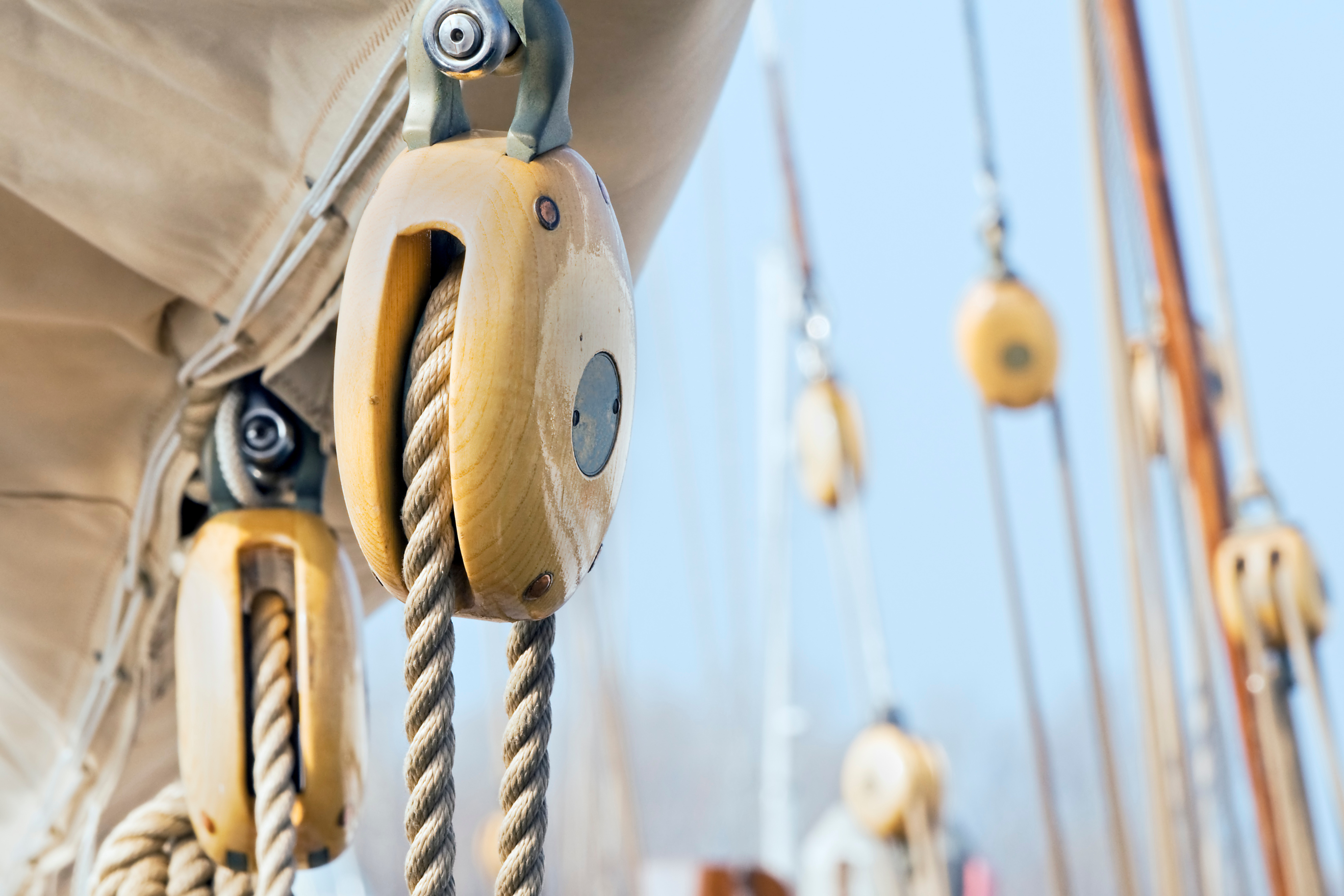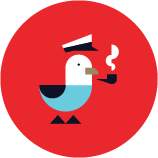Some boats are love at first sight, while others steal your heart despite their flaws. For Jack Dexter and his wife Carol, their first...
Rope Care 101: Treat Your Rigging Like Your Engine
Post by Grant Headifen | Global Director of Education at NauticEd - Published on 11/02/25 4:00 AM

We’re excited to partner with NauticEd, your go-to resource for online boating education! Together, we’ll deliver key updates on USCG regulations, relatable insights, and practical tips in exclusive articles featured in our boater newsletter, The Running Fix. Subscribe and stay tuned for more articles that keeps you informed and inspired!
Rope Care 101: Treat Your Rigging Like Your Engine
By Grant Headifen, Global Director of Education at NauticEd
On a sailboat, the rig—both standing and running—is your engine. Owners routinely service diesel and outboards, yet many let rigging go 10–15 years without attention. Your running rigging is the horsepower that turns wind into motion. If you want performance and reliability, give lines the same discipline you give the motor: regular inspection, timely maintenance, and scheduled replacement.
What Degrades Rope
- UV (sunlight).
Ultraviolet radiation weakens fibers over time. You’ll see it as color fade and a fuzzy, brittle surface. Manufacturers add UV inhibitors, but they slow damage—they don’t stop it. - Chafe and poor hardware fit.
Undersized blocks, worn fairleads, sharp exits, and overloaded clutches crush and cut covers. Repeated cycling under load over a sheave generates internal heat and abrasion that flatten and fuse fibers, especially in low-melting-point synthetics.


- Heat under cyclic load.
As a line stretches and relaxes across a sheave in puffs or seaway, fibers rub internally and build heat. Severe cases partially melt the core or cover, leaving shiny, flattened zones and a big loss in working strength. - Contamination (salt, dust, grit, chemicals).
Harbor dust, city fallout, salt crystals, algae, and fine silt work into the sheath and core. These particles act like tiny knives during stretch cycles, accelerating wear and stiffening the rope.
When to Replace
Use sight, touch, and simple tests:
- UV tell-tales: faded color, powdery/fuzzy surface. A fingernail or the side of a knife drawn lightly across fibers that shed easily indicates embrittlement.
- Chafe zones: check where you seldom look—halyard sections that live over masthead sheaves, jib/genoa sheet leads, traveler and vang blocks, clutch jaws, and around cleats. Look for cover cuts, glazing, or crushing.
 Dyneema Core eye splice damage do to sheave at the top of the mast
Dyneema Core eye splice damage do to sheave at the top of the mast
- Heat damage: flat, glossy patches or fused fibers indicate internal heating and a significant strength drop.
 12 strand dyneema sever chafe and heat damage
12 strand dyneema sever chafe and heat damage
- Core/cover integrity: any exposed core, slipped cover, or hard spots from crushing are replacement triggers.
 12 strand dyneema cut fibers due to chafe
12 strand dyneema cut fibers due to chafe
If in doubt, replace mission-critical lines (halyards, spinnaker gear, reefing, headsail sheets). Treat dock lines and control lines the same way if they show glazing, deep fuzz, or stiff salt-set.
Reduce Wear in Use
- Change the nip. Move where the line bears over a sheave or clutch by inching halyards up/down or sheets in/out so a new section takes the load.
- Match line to hardware. Use the right diameter for sheaves and clutches; replace grooved or sharp-edged hardware.
- Manage loads. Ease shock loads with proper trim, fair leads, and smooth winching.
- Temporary protection. For light cosmetic chafe on a cover, cloth athletic tape can buy time. It’s a stopgap—plan a repair or replacement.
Cleaning: Keep Strength, Keep Flex
Clean rope is stronger and lasts longer. Soiling plus load cycles accelerate strength loss. (One technical rescue test found ~20% loss after a single soil-and-pull cycle and nearly 40% after eight.) Dirt increases friction; salt crystals cut fibers during stretch.
Routine rinse (after sailing):- Fresh-water rinse to remove salt and grit.
- Flake lines to dry; don’t stow wet.
Periodic wash (in season or before lay-up):
- Hand-wash: Soak in fresh, lukewarm water with a mild, eco-friendly soap. Gently massage to loosen salt and silt.
- Machine-wash (only if approved by the rope maker):
- Front-loading washer, cold, delicate cycle.
- Use rope-specific detergent or very mild soap. Skip the spin cycle.
- Avoid washing powders: a Teufelberger study reported up to ~41% breaking-strength loss after eight washes with washing powder, versus ~2% with rope detergent.
- After cleaning, lay lines in wide loops to dry; don’t hang heavy, wet lines over metal where rust can transfer.
Drying and Storage
- Dry out of sun. Ventilated shade only; no heaters, no tumble dryers. UV and heat accelerate degradation and can alter elasticity.
- Store cool and dry. Aim for ~68°F (20°C), <65% humidity. Keep away from oils, solvents, and chemicals.
- Coil or bag loosely. Use rope bags to limit re-contamination and tangles.
- Off-season: Never leave lines in hot cars or damp bilges/basements. Salt left inside will re-crystallize and keep cutting at fibers.
Simple Inspection Routine (Monthly in season; before/after passages)
- Walk every working run of halyards, sheets, reef lines, vang/traveler, and dock lines.
- Feel for changes: hard spots, flat glazing, stiffness, or soft thin sections.
- Check hidden zones: masthead sheaves, clutch jaws, and fairlead turns.
- Assess hardware: sheave diameter vs. line, smooth edges, clutch sizing.
- Clean and dry anything salty or gritty.
- Rotate or “change the nip” where you see early wear.
- Tag and schedule replacement for any line with core exposure, severe glazing, fused fibers, or deep cover cuts.
Bottom Line
Lines are not consumables to be ignored; they are load-bearing components of your boat’s engine. Keep them clean, keep them cool and dry, spread the wear, and replace on condition—not just on a calendar. Do that, and you’ll preserve strength, protect gear, and keep the boat performing the way it should.
 Meet the Author: Grant Headifen, Global Director of Education at NauticEd
Meet the Author: Grant Headifen, Global Director of Education at NauticEd
My mission for NauticEd is to provide the highest quality boating education available - and deliver competence wherever sailors live and go.
Take NauticEd Online Sailing courses
Take NauticEd Online Power courses
Be the first to access boater stories like this one by subscribing to our new newsletters,The Running Fix and Dock Talk!
-2.png)




